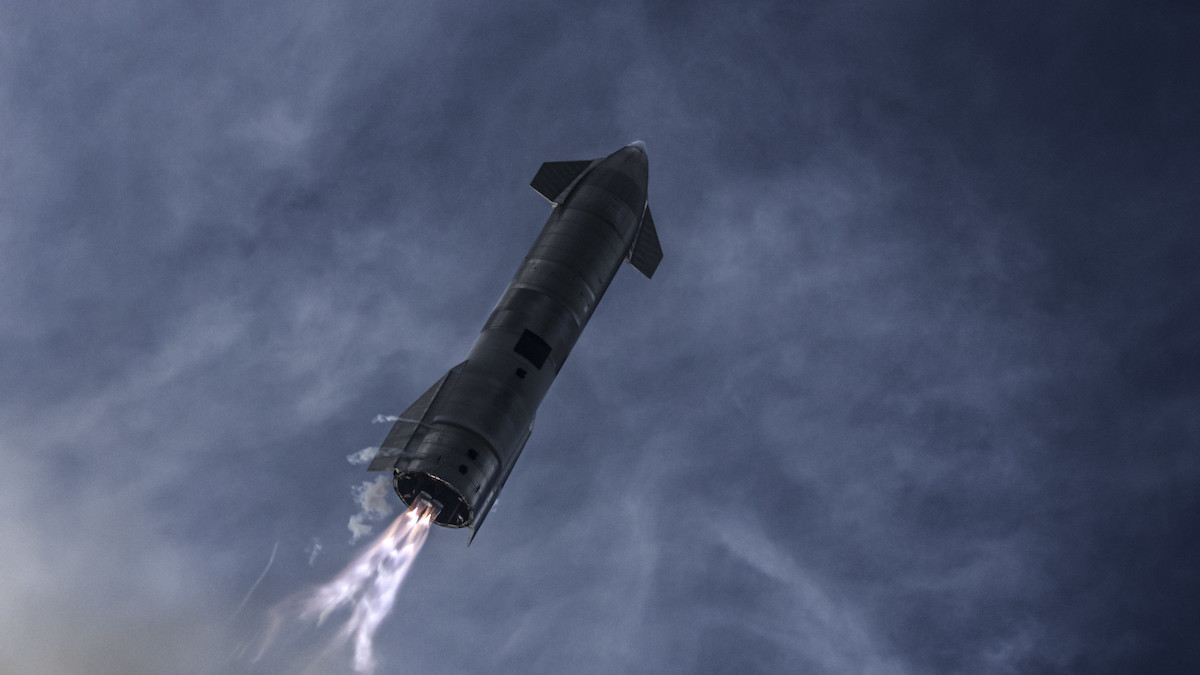
A federal judge on Thursday dismissed a lawsuit filed by Blue Origin over NASA’s award of a $2.9 billion lunar lander contract to SpaceX, clearing the way for the agency to move forward in a partnership with Elon Musk’s space company on a craft to transport astronauts to the surface of the moon.
The decision apparently ends a six-month delay in the start of NASA’s contract with SpaceX for a human-rated moon landing vehicle based on the company’s Starship mega-rocket. The Human Landing System is the final core element to be developed for NASA’s Artemis program, which aims to return astronauts to the surface of the moon.
Judge Richard Hertling from the U.S. Court of Federal Claims rejected a lawsuit filed by Blue Origin, the space company founded by billionaire Jeff Bezos, that challenged NASA’s award of the Human Landing System contract to SpaceX.
The judge threw out Blue Origin’s lawsuit in a ruling Thursday, and Bezos signaled that Blue Origin will not appeal the decision.
“Not the decision we wanted, but we respect the court’s judgment, and wish full success for NASA and SpaceX on the contract,” Bezos tweeted.
NASA said it will resume work with SpaceX on the HLS contract, known as “Option A” in NASA’s procurement language, as soon as possible. The space agency announced it awarded SpaceX the $2.9 billion HLS contract April 16, choosing the Starship concept over competing bids led by Blue Origin and Dynetics.
Blue Origin assembled a team of industry juggernauts, including Lockheed Martin, Northrop Grumman, and Draper, in a “National Team” of contractors to design a human-rated lunar lander. But the Blue Origin-led team’s bid totaled $5.9 billion, more than double the value of the contract NASA ultimately awarded to SpaceX.
NASA said in April that SpaceX will self-fund and assume financial risk for more than half of the Starship moon lander’s development and testing. SpaceX is already privately developing the reusable Starship heavy-lift launch system, which will send the lunar lander into space, then refuel the ship’s methane and liquid oxygen tanks over a series of launches, supplying propellant to power engines for the descent and takeoff at the moon.
After losing a bid protest with the Government Accountability Office, Blue Origin filed a lawsuit against NASA in August with the Court of Federal Claims over what it said were flaws in the agency’s procurement approach. Blue Origin, which has not yet flown a rocket into orbit or developed a deep space vehicle, released an infographic the same month that said SpaceX’s HLS proposal is “immensely complex and high risk.”
NASA said it hoped to pick at least two HLS teams to proceed in development of a crewed moon lander, but Congress did not appropriate enough funding in fiscal year 2021 to support two contracts.
In a statement released after the court ruling Thursday, Blue Origin said its lawsuit highlighted “important safety issues” in the HLS procurement, which the company said NASA has not yet addressed.
“Returning astronauts safely to the moon through NASA’s public-private partnership model requires an unprejudiced procurement process alongside sound policy that incorporates redundant systems and promotes competition,” Blue Origin said in a statement. “Blue Origin remains deeply committed to the success of the Artemis program, and we have a broad base of activity on multiple contracts with NASA to achieve the United States’ goal to return to the moon to stay.”
NASA’s HLS contract with SpaceX covers two missions to the moon — first a demonstration flight without astronauts, then a moon landing with crew near the lunar south pole. NASA’s goal of landing humans on the moon by the end of 2024, set by the Trump administration, was already in doubt before the HLS procurement delay.
NASA’s plan for the Artemis missions is to use the government-owned Space Launch System rocket and Orion spacecraft to transport astronauts to the vicinity of the moon, where they will board commercial lunar landers to carry them to the moon’s surface and back into space. The astronauts will return to Earth on the Orion capsule.
“In addition to this contract, NASA continues working with multiple American companies to bolster competition and commercial readiness for crewed transportation to the lunar surface,” the agency said. “There will be forthcoming opportunities for companies to partner with NASA in establishing a long-term human presence at the moon under the agency’s Artemis program, including a call in 2022 to U.S. industry for recurring crewed lunar landing services.
“Through Artemis missions, NASA will lead the world in landing the first woman and first person of color on the lunar surface, conduct extensive operations on and around the moon, and get ready for human missions to Mars,” NASA said Thursday.
NASA awarded five companies funding in September to work on studies for future lunar lander concepts, beyond the Artemis program’s first human landing on SpaceX’s Starship vehicle.
Dynetics, which lost to SpaceX in the HLS Option A competition, received an award of $40.8 million. Lockheed Martin and Northrop Grumman, both members of Blue Origin’s National Team, received $35.2 million and $34.8 million, respectively.
NASA awarded Blue Origin $25.6 million, and gave SpaceX $9.4 million. NASA said in a statement the awards will “help the agency enable a steady of pace of crewed trips to the lunar surface under the … Artemis program.”
“These companies will make advancements toward sustainable human landing system concepts, conduct risk-reduction activities, and provide feedback on NASA’s requirements to cultivate industry capabilities for crewed lunar landing missions,” NASA said in September.
Email the author.
Follow Stephen Clark on Twitter: @StephenClark1.
